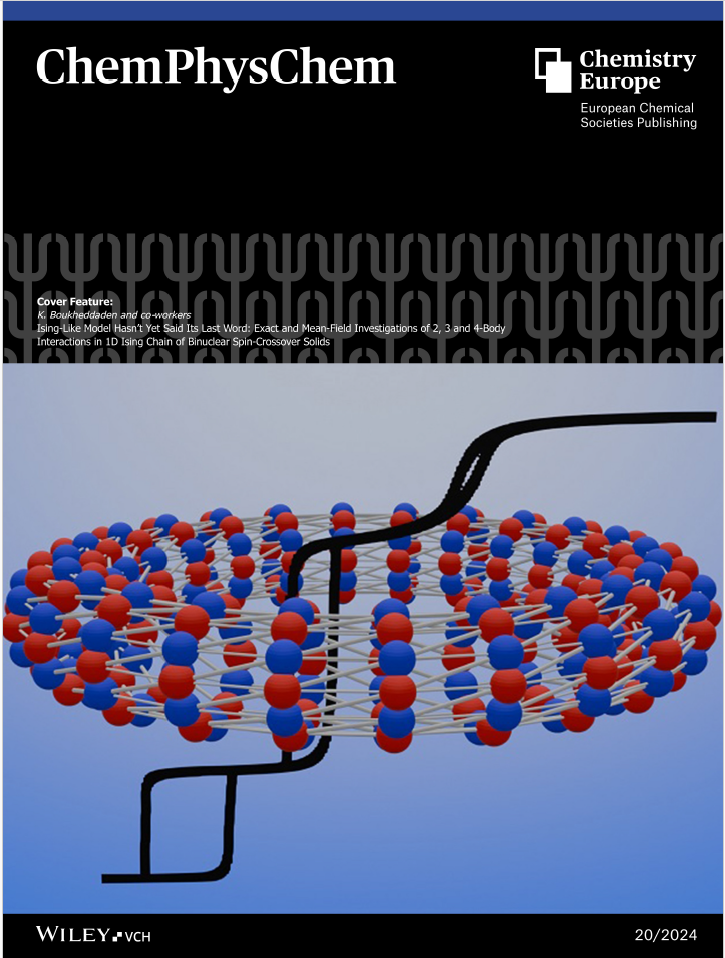You are here : ENGLISHAbout UVSQNews
- Partager cette page :
- PDF version
Decoding the Mysteries of Spin-Crossover Materials: A Model to Explore Complex Phenomena
Researchers have developed a model inspired by the Ising model to explain a wide range of fascinating behaviours observed in certain spin-crossover materials. Their work made the cover of ChemPhysChem.
Spin-crossover materials are known for their ability to change magnetic states under the influence of temperature or external stimuli such as light, electric, or magnetic fields. For some of these materials, researchers have observed surprising phase transitions, sometimes occurring in multiple steps, or magnetic memory effects (hysteresis). However, modelling these complex experimentally observed behaviours has often proven to be a challenge.
A team of researchers from the GEMaC laboratory extended a well-known theoretical model, the Ising model, adapting it to a new class of materials composed of one-dimensional chains of small magnetic units with two spin nuclei, known as "binuclear Spin-Crossover Solids". They incorporated interactions between multiple units, both at short and long ranges, using a combination of sophisticated mathematical techniques: the transfer matrix method and the mean-field approach. This allowed them to show that these competing interactions naturally lead to multi-step phase transitions with spontaneous organisation of spin states.
This model provides a new perspective on how these materials function and could even be expanded to more complex structures, such as trinuclear chains observed experimentally. The researchers also aim to extend their work to two-dimensional systems to explore novel self-organizations driven by magnetic or elastic frustrations in spin states.
With these advances, the researchers are paving the way for a better understanding of spin-crossover materials and potentially new applications in high-density memory devices.

Reference :
K. Boukheddaden, N. El Islam Belmouri, N. di Scala,
“Ising-Like Model Hasn't Yet Said Its Last Word: Exact and Mean-Field Investigations of 2, 3 and 4-Body Interactions in 1D Ising Chain of Binuclear Spin-Crossover Solids”
ChemPhysChem 25, e202400238 (2024).


